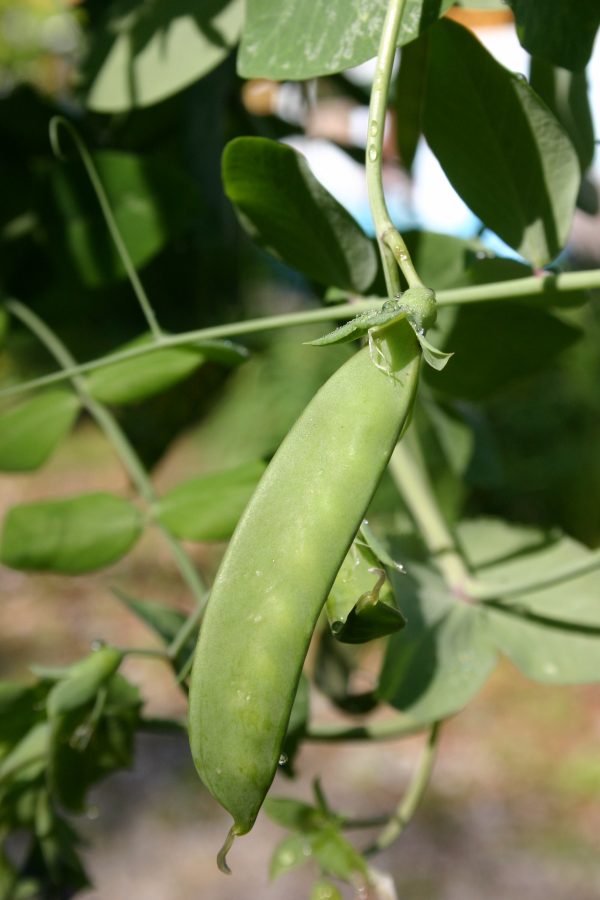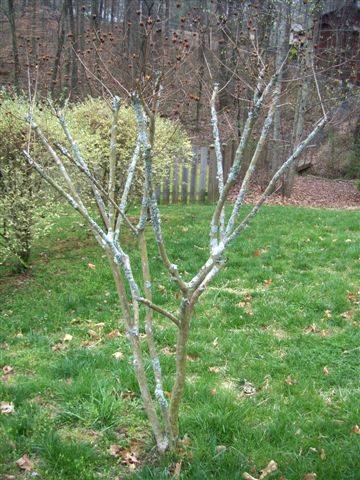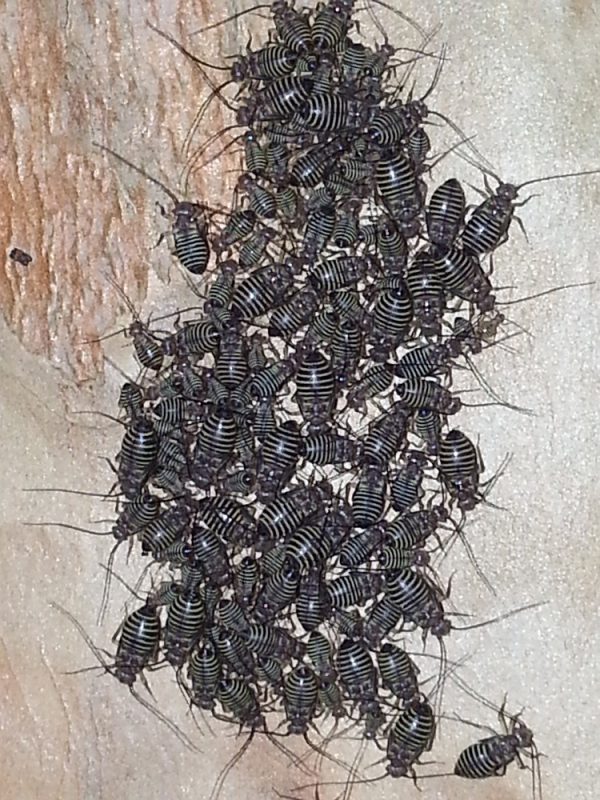Hornet – Control
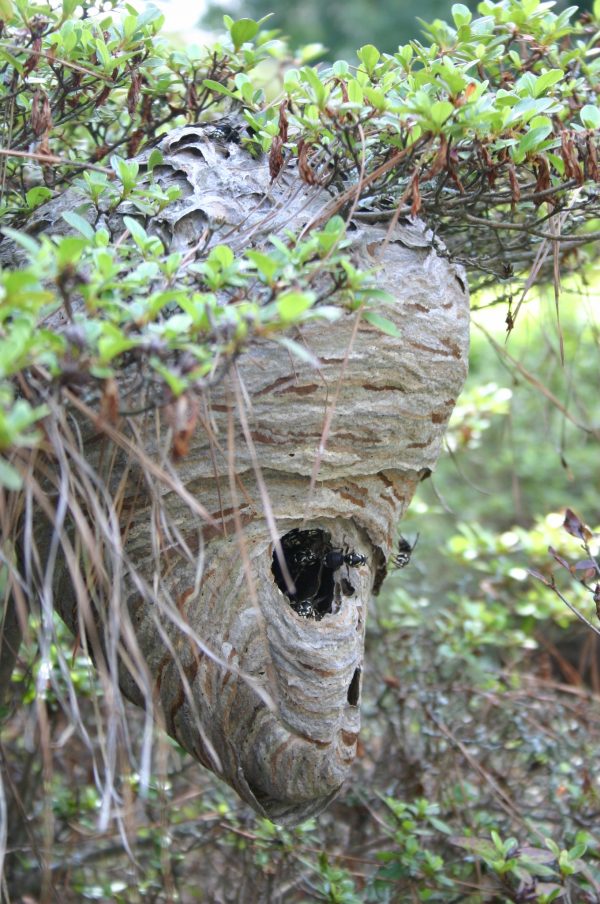
It is startling to pass by a shrub or small tree in the yard and suddenly notice a gray, football-shaped hornet nest hanging down. Hornets have received such bad press in cartoons and folklore that you might instinctively cover your face and run.
In fact, hornets are not particularly aggressive towards humans. If left undisturbed they will go about their business of building their nest and capturing caterpillars, small grasshoppers, flies and bees.
The most common hornet is called “bald-faced” because the yellow head contrasts with the dark brown body. Hornets build their nests from chewed wood fiber, which is used to make hollow layers, like an onion, around a branch. They enter and exit the nest from an opening at the lower end.
It is often not necessary to destroy a hornet nest. When their flight path is overhead and the nest is away from curious children, hornets can be left alone.
They are beneficial insects, consuming many insect pests of the garden and landscape.
If a nest is too close for comfort, an aerosol Wasp & Hornet spray can be used after dusk, when the insects are in their nest. If the nest is in a shrub you’d like to keep from harm, use a water-based garden insecticide. Otherwise the petroleum insecticide carrier in the aerosol spray will kill plant leaves.
Hornets do not overwinter in their nest. Their former home can be taken down in winter after a hard freeze kills any remaining brood.
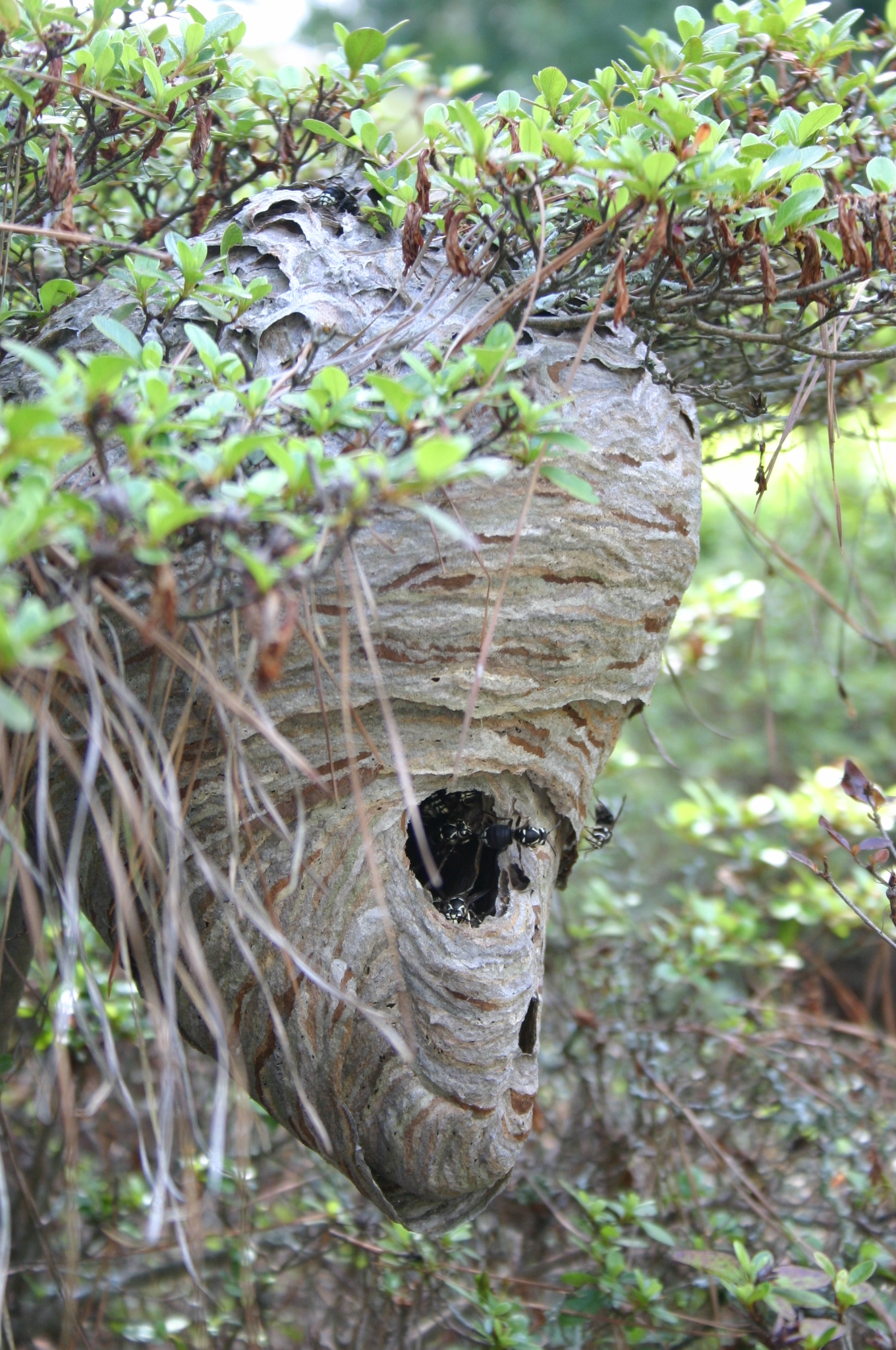
hornet nest



